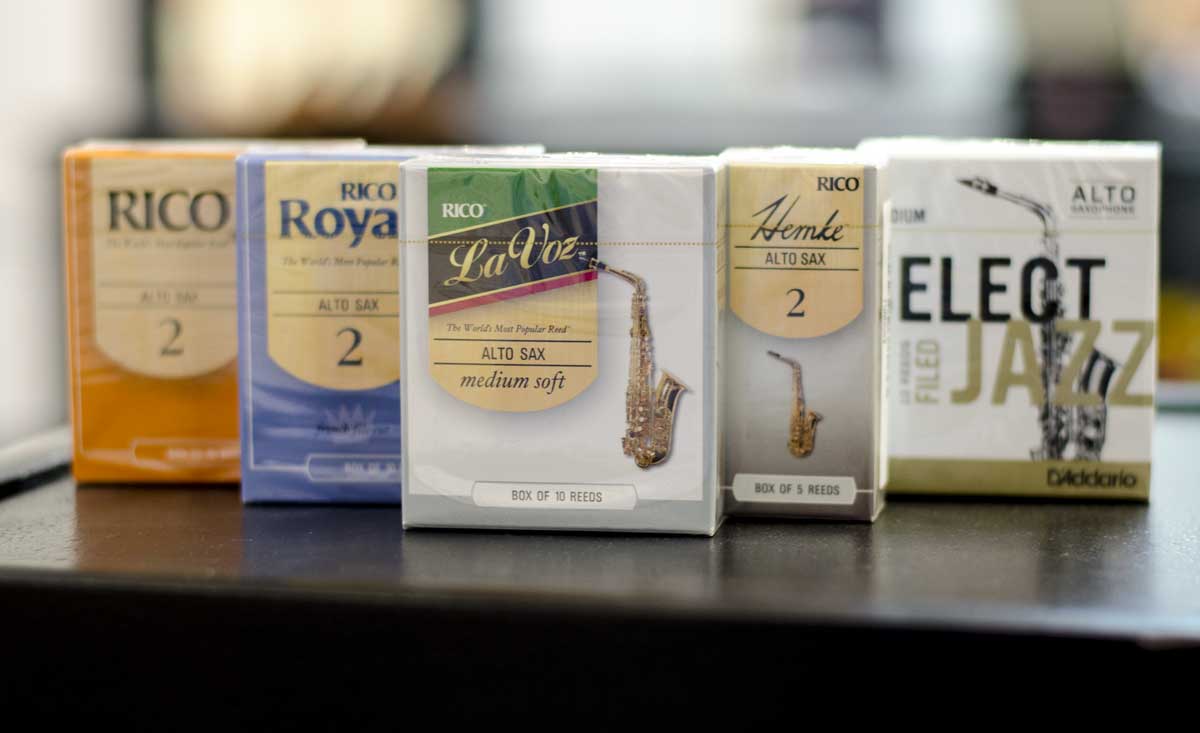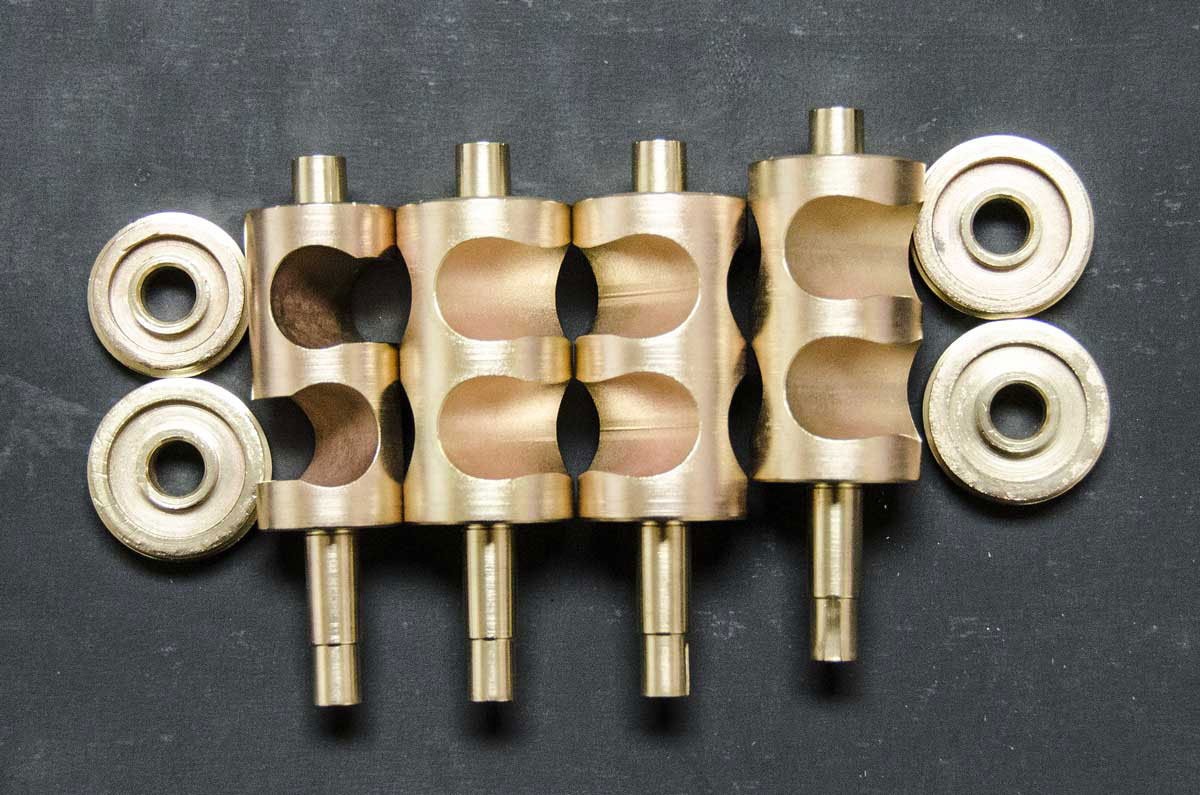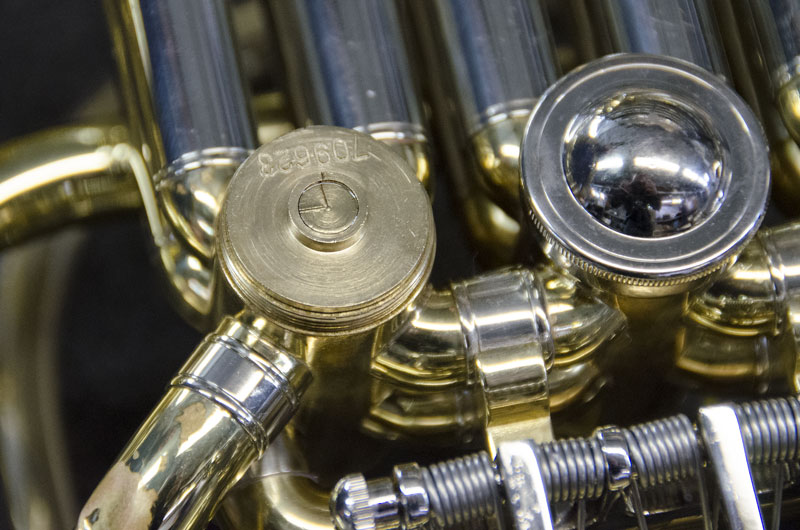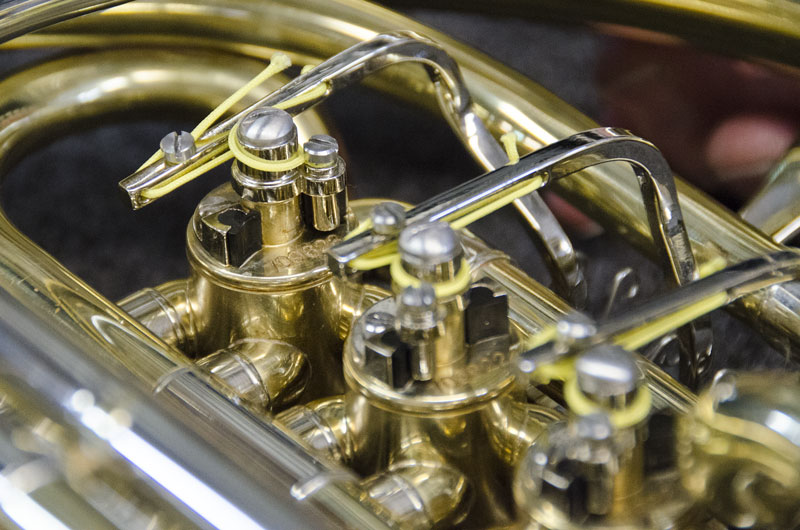Most wooden oboes and clarinets are made of granadilla wood. It is a very dense and stable wood and is very carefully aged and treated before it is made into an instrument. However, it is a piece of wood and therefore is subject to the will of a natural organic product.
It is often commented on in professional circles that it is not a matter of “if” your instrument is going to crack but a matter of “when it will” crack. More so with oboes than clarinets.
At this point the instrument is not ruined ordefective, it just needs repaired. Something we do all the time. We seal the crack up using one of several different methods and that usually takes care of the problem. However it is also important to note that sometimes a crack will re-appear after it has been repaired at which time we would repeat the same process.
What can you do to prevent a crack (Remeber, expect it to crack sooner or later. It’s wood.)
- Take precautions. Do not keep wood instruments in extreme cold or hot conditions. (Mostly talking about your car here.) When getting ready to play, let the instrument adjust to the room temperature. Then blow some warm air through the instrument before starting to play it.
- Proper maintenance. Swab the bore out after playing every time. Use a good quality absorbent swab and do not leave it inside the bore of the instrument. Have your instrument checked annually for need of bore oil. Special note: too much oil is worse for the instrument than not enough. It is used very sparingly.
Here is an excerpt from Yamaha on care of your Yamaha clarinet or oboe. It pretty much applies across the board on all brands and types of wooden instruments.
Wood care for your Yamaha clarinet or oboe
Yamaha clarinets and oboes are made from African Grenadilla, carefully aged and treated, then crafted into fine musical instruments. Grenadilla is one of the hardest, most dense and stable woods available and is the wood of choice for manufacturing the best clarinets and oboes. Yamaha employs a combination of some of the most innovative, modern machinery and traditional hand craftsmanship to make woodwinds that are highly regarded for their consistent quality, tone and intonation. Beyond maintenance procedures used for plastic oboes and clarinets, these are some steps we recommend to properly "break-in" and maintain your carefully crafted wood instrument.
1. Avoid playing the instrument when it is very cold to the touch! It needs to warm up to the air temperature of the room or outdoor environment, gradually if possible, before warm air is blown through it! Holding the instrument under a jacket, or just opening the case 20-30 minutes in the room before playing can be helpful.
2. When playing for longer periods of time, swab out more frequently a "handkerchief-type" swab can often do a better job than other types. It is important that the swab is not overly tight when pulled through. Any attempt to force a tight swab through should be avoided before the bottom end of the swab disappears into the joint, so that it can be carefully backed out.
3. Generally, the treated wood of a new Yamaha instrument or joint doesn’t need further treating, but if the bore (interior surface) gets a very dull, dry look, careful application of bore oil can help seal the wood to prevent excessive moisture absorption-another potential cause of cracking. An overly dry bore, with many open-grain surfaces can actually play like the bore was a bit oversized, changing tone and intonation characteristics. A conservative approach to oiling is recommended-both in the amount of oil applied, and the frequency. Excessive oil can gum-up pads and affect tone. Apply a few drops of good quality bore oil on a soft stick-type swab, or a handkerchief swab (just for that purpose) and draw it through the joint, repeating the process until the bore has a uniform sheen and is not overly wet. If a stick swab is used, open any closed keys and blow a focused airstream into all tone holes to blow out any excess lint. A dry bore can be treated a couple of times in a six month period, and then once or twice a year if needed. Some instruments have a more highly polished bore that needs little or no oiling. Some players have the bore polished with beeswax or furniture wax-although this can affect tone, as can excessive oiling.
These steps will provide proper maintenance for your wood Yamaha oboe or clarinet, and help prevent surface cracking. In the unlikely event that a crack develops, it is not as serious a problem as you first might think. Many artist/performers and teachers play on instruments that have properly repaired cracks-some even feel that it "frees-up" the sound, and causes the instrument to play better!
Fine wood instruments should be treated with respect, but also played and enjoyed for the warm tonal characteristics they yield. It is very important that good care and maintenance is provided. In addition to owner care, this involves regular visits to a reputable woodwind technician-much like what is involved in maintaining a car. This can be several times a year for some students and frequent players, or as little as once every few years. Worn pads should be replaced with quality pads as needed, to ensure good tone hole covering. Key openings and adjustments (key regulation) need to be checked/adjusted periodically. With these things in mind, your Yamaha Woodwind instrument will both provide years of musical use and enjoyment, and also maintain its value.


 As we are closing in on the end of another school year, we have a tendency to want to take the summer off from anything school related. When it comes to playing an instrument you have to resist the urge to do that. You should make a plan to practice and stick with it so that you don’t lose any of the skills that you have taken the whole school year to learn.
As we are closing in on the end of another school year, we have a tendency to want to take the summer off from anything school related. When it comes to playing an instrument you have to resist the urge to do that. You should make a plan to practice and stick with it so that you don’t lose any of the skills that you have taken the whole school year to learn. Rotary valves require thicker oil than piston valves. The same reasons for using synthetic oil on pistons also apply to rotary valves. The oil we use comes in a bottle with a syringe type applicator. Unfortunately, even this is not very helpful. To properly oil them they need to be taken apart. If you play an instrument with rotary valves and are not handy with a screwdriver and mallet, tiny screws and bits of string, your ability to oil the valves is pretty limited.
Rotary valves require thicker oil than piston valves. The same reasons for using synthetic oil on pistons also apply to rotary valves. The oil we use comes in a bottle with a syringe type applicator. Unfortunately, even this is not very helpful. To properly oil them they need to be taken apart. If you play an instrument with rotary valves and are not handy with a screwdriver and mallet, tiny screws and bits of string, your ability to oil the valves is pretty limited.

 Our annual Year-End Sale is going now though the end of the month. If your student is going to continue in band or orchestra next school year, then this is a great time to bring in your student-level instrument and exchange it for an advanced-level instrument.
Our annual Year-End Sale is going now though the end of the month. If your student is going to continue in band or orchestra next school year, then this is a great time to bring in your student-level instrument and exchange it for an advanced-level instrument.